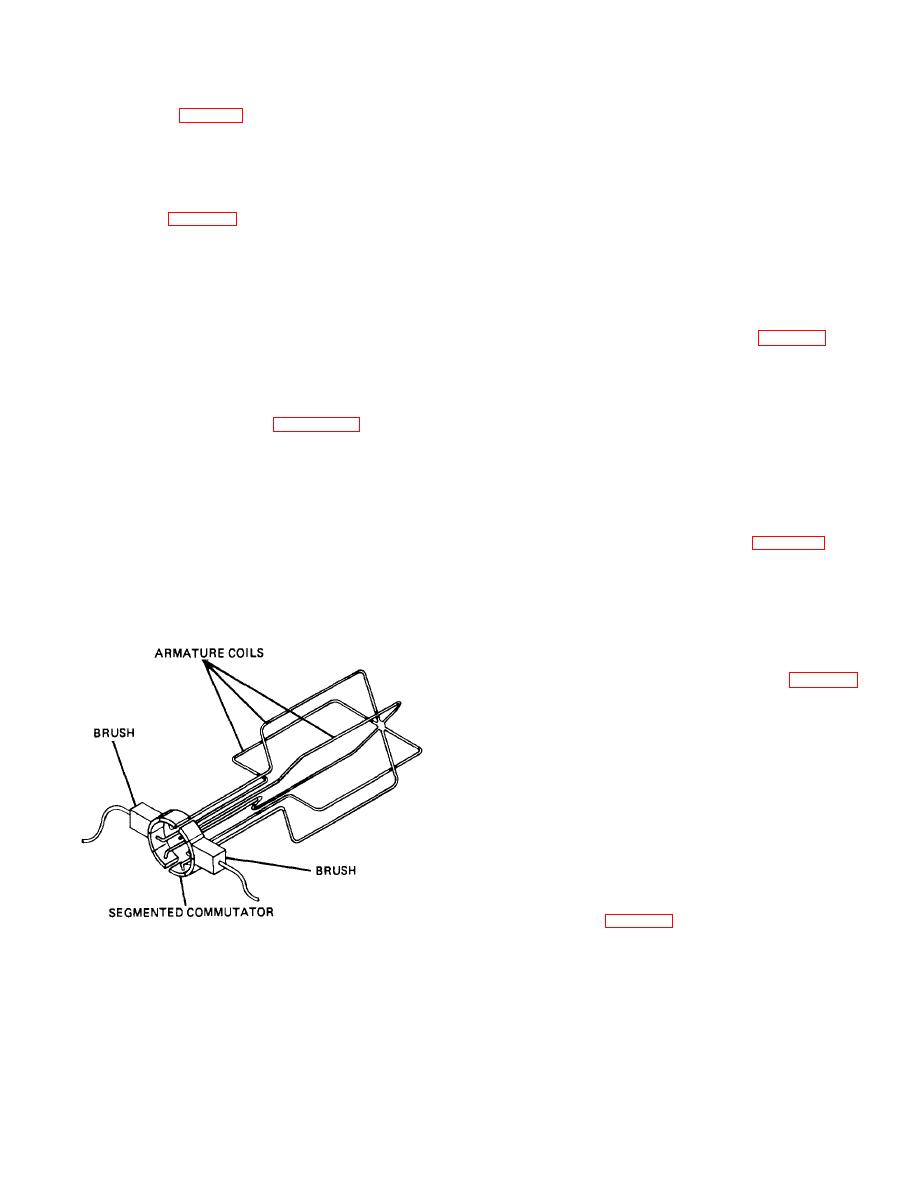
| Tweet |

Custom Search
|
|

|
||
 TM 9-8000
in the two sides A and B of the loop, and the consequent
armature rotation. They are constructed of heavy copper
field distortion (2, fig. 14-1), A will be repulsed upward
wire that is usually rectangular in cross section. An
and B downward, and the loop will rotate in a clockwise
insulating material is placed within the windings to
direction.
insulate the coils from each other. The coils then are
insulated on the outside by either wrapping them in
paper or sealing them in rubber. The field coils are
14-3.
Automotive Starting Motor.
secured to the field frame by the pole shoes. The pole
shoes serve as a core for the field coils to increase
a. General (Fig. 14-2). In use, the motor armature
permeability.
has many armature coils equally spaced around the
entire circumference of the armature. Each of these
c. Field Circuit Configurations. Field circuits will
coils carries current and consequently exerts a force to
vary according to the application of the starter. The
rotate the armature as it passes the pole pieces. The
following are the most popular.
switching of the armature coils to the brushes is handled
by a segmented commutation.
The result is a
(1) Two Windings: Parallel (A, fig. 14-4). The
comparatively high turning power (or torque) that is
wiring of two field coils in parallel will increase their field
sufficient to crank the engine if it is applied through
strength because they each receive full voltage. Note
suitable gear reductions.
that two additional pole shoes are used. Though they
have no windings, their presence will strengthen further
b. Construction. A cutaway view of a typical
the magnetic field.
automotive starter is shown in figure 14-3. The basic
motor consists of the following parts.
(2) Four Windings: Series-Parallel (B, Fig. 14-
4). The wiring of four field coils in a series-parallel
(1) Armature. The armature contains multiple
combination will create a much stronger magnetic field
loops of heavy copper. These coils pass through a
than the two field coil configuration described above.
laminated core of iron to increase the permeability of the
armature. The commutator segments are made of
(3) Four Windings: Series (C, Fig. 14-4). The
heavy copper bars that are set into mica or epoxy resins.
wiring of four field coils in series will provide a large
The armature rotates on bronze bushings.
amount of low-speed starting torque, which is a very
necessary characteristic of an automotive starting motor.
(2)
Field Coils.
The field coils
An undesirable characteristic of series-wound motors is
electromagnetically create the magnetic field that cause
that they will build up excessive speed if allowed to run
free to the point where they will destroy themselves.
(4) Six Windings: Series-Parallel (D, Fig. 14-4).
Three pairs of series-wound field windings provide the
magnetic field for a heavy-duty starter.
This
configuration uses six brushes.
(5) Three Windings: Two Series, One Shunt (E, Fig
. 14-4). The use of one field coil that is shunted to
ground with a series-wound motor will control motor
speed. The shunt coil, because it is not affected by
speed, will draw a steady, heavy current, effectively
limiting speed.
14-4.
Starter Motor Drives.
a. General (Fig. 14-5). The starter may drive the
engine through a pinion or by a dog clutch attached to
Figure 14-2. Automotive Starting Motor
the starter armature shaft. The shaft is brought together
TA233575
14-2
|
||
 |
||